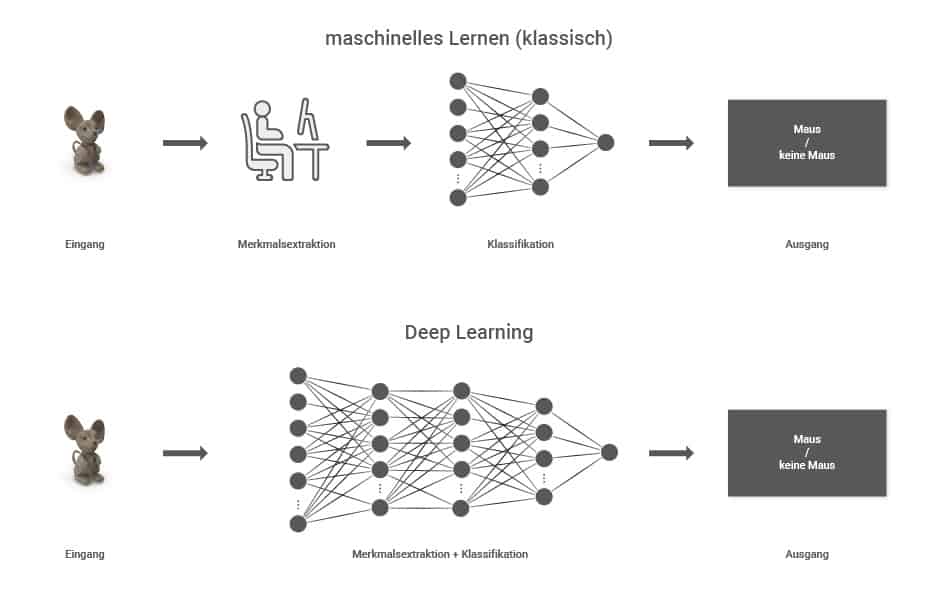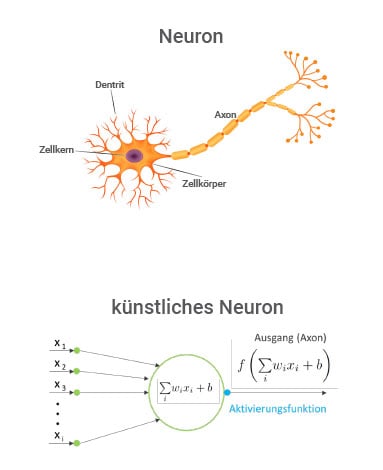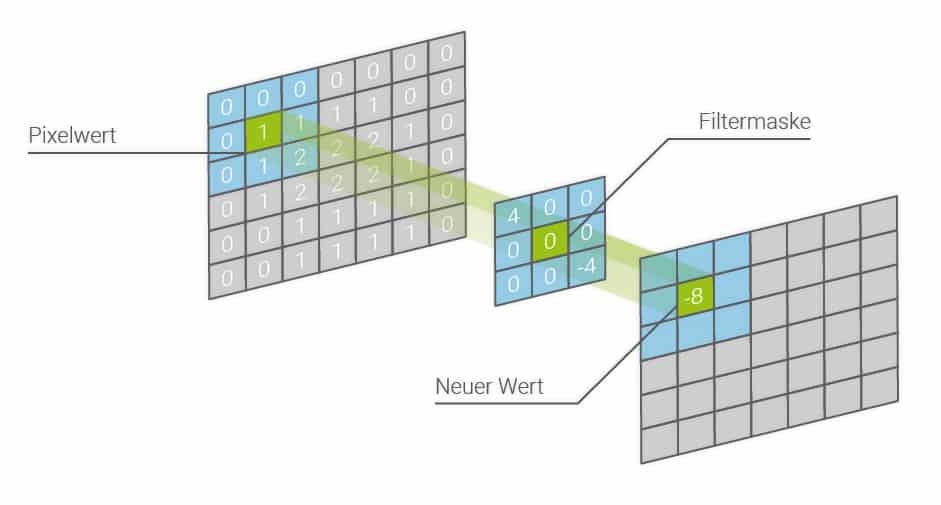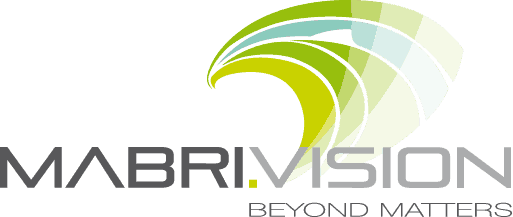SKILLS
AI VISION
What does artificial intelligence mean?

Historical course
Although artificial intelligence is often described as a trend, it is by no means a new phenomenon. As early as the 1950s, scientists shared the belief that the process of thinking is not limited to the human brain. After research on the topic stalled, particularly in the 1980s, technology companies like Google gave the area a new boost in the 2000s. Today, artificial intelligence is an integral part of our everyday lives.
What does machine learning (ML) mean?
In image processing there are basically two different ways to process a problem:
Rule-based programming
- Manually formulate and program rules after the results are calculated or defined
Machine learning
- Training a model with data
- Independent learning of patterns from the data
- Classifying or estimating outcome variables

Which approach is better depends on the application and must be carefully assessed or determined systematically. Rule-based approaches, especially in measurement technology and image processing, are well suited to making decisions based on clear measurement characteristics and rules. If the rules are not known or can only be systematically extracted from images with great effort, a machine learning method may be a better approach. Machine learning methods are typically used in image processing for difficult segmentation tasks, in character recognition (OCR / OCV), pattern and anomaly recognition, object and image recognition and image classification. In modern applications, both approaches are usually combined sensibly.
Machine learning (ML) learning methods
Roughly and simply put, there are 3 different learning methods for machine learning.

Deep learning vs. machine learning
Modern AI applications are based almost exclusively on deep artificial neural networks (ANN). The special thing about the networks is that they can also perform complex tasks and manual feature extraction can be completely eliminated. An ANN is therefore able to independently carry out complex tasks.
- Deep learning is a branch of machine learning
- DL methods are based on artificial neural networks with several intermediate layers

Artificial neural networks (ANN)
Deep learning processes are based on artificial neural networks.
These networks are inspired by (biological) neural networks, i.e. part of a nervous system. Artificial neural networks are built in layers. A layer or level consists of several artificial neurons. There are several hidden levels between an input and output level. The structure gets its name “deep” neural network because of these hidden layers.


Convolutional Neural Networks (CNN)
So-called “convolutional neural networks” (CNN) are mostly used in image processing. These networks, inspired by the visual cortex, consist of multiple feature maps. These feature maps correspond to the layers of an artificial neural network and are generated by convolution. The convolution operators produce different characteristics/features, such as edges. In image processing, a CNN should be able to generalize features and represent them in ever higher levels of abstraction.

Source: Lecun, Yann, et al. "Gradient-Based Learning Applied to Document Recognition." Proceedings of the IEE 86.11 (1998): 2278-2324

Source: Lee, Honglak, et al. "Unsupervised Learning of Hierarchical Representations with Convolutional Deep Located Networks." Communications of the ACM 54.10 (2011): 95-103.

MV.MINDNET, the deep learning platform from MABRI.VISION combines the latest technology and practice-oriented solutions.
